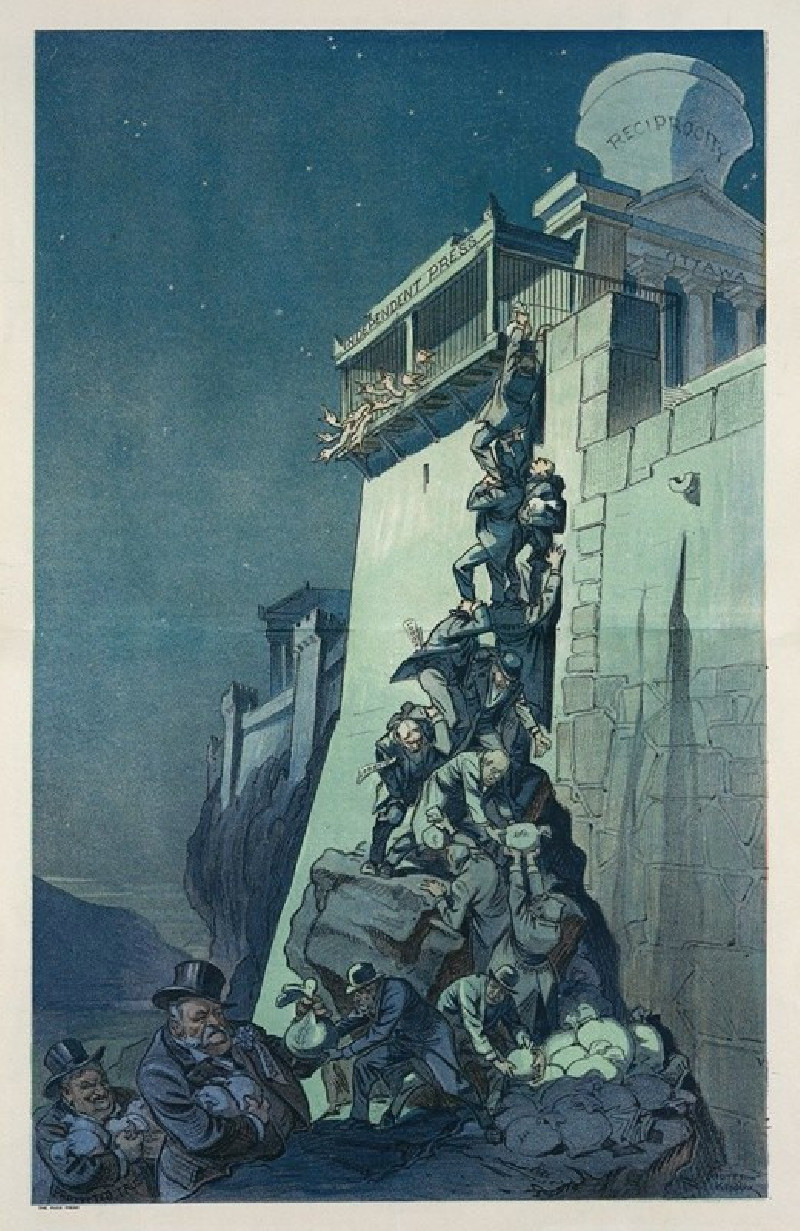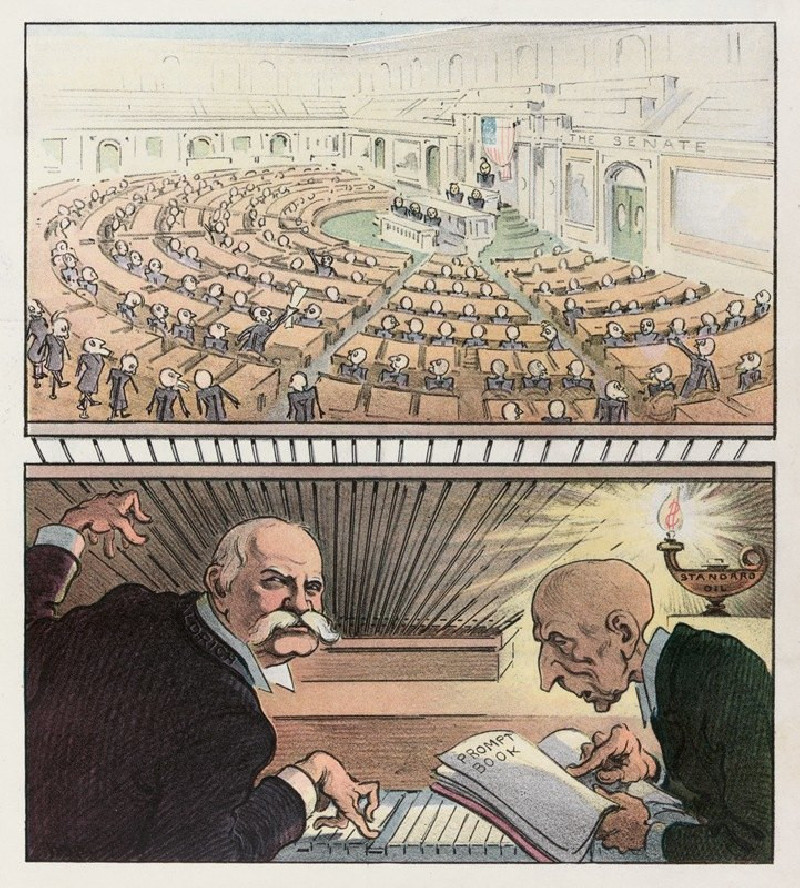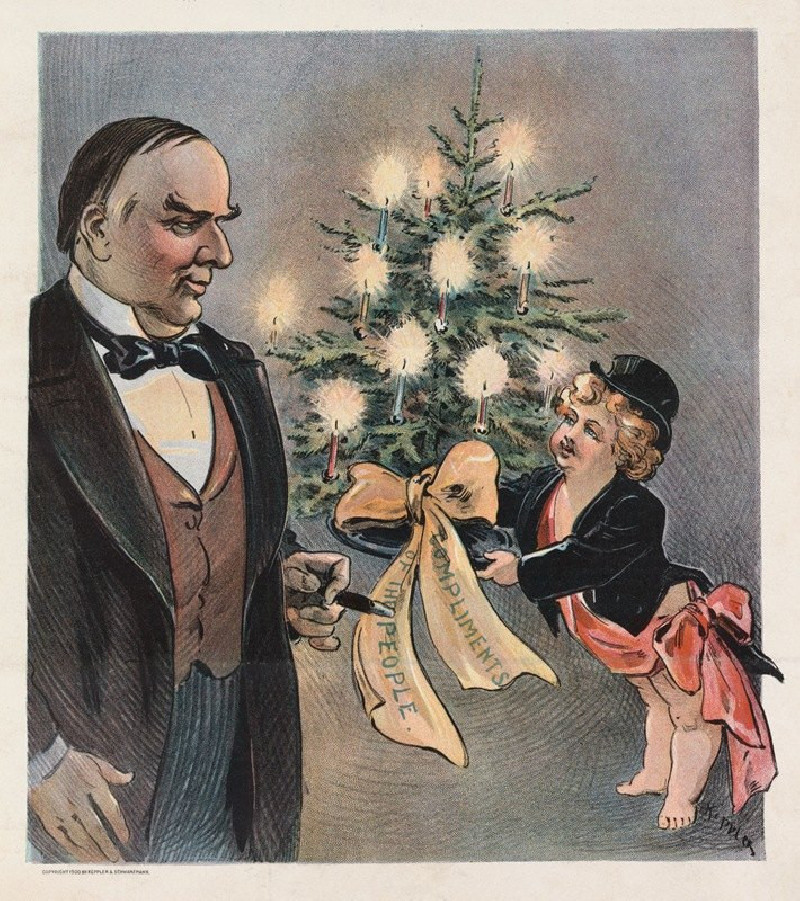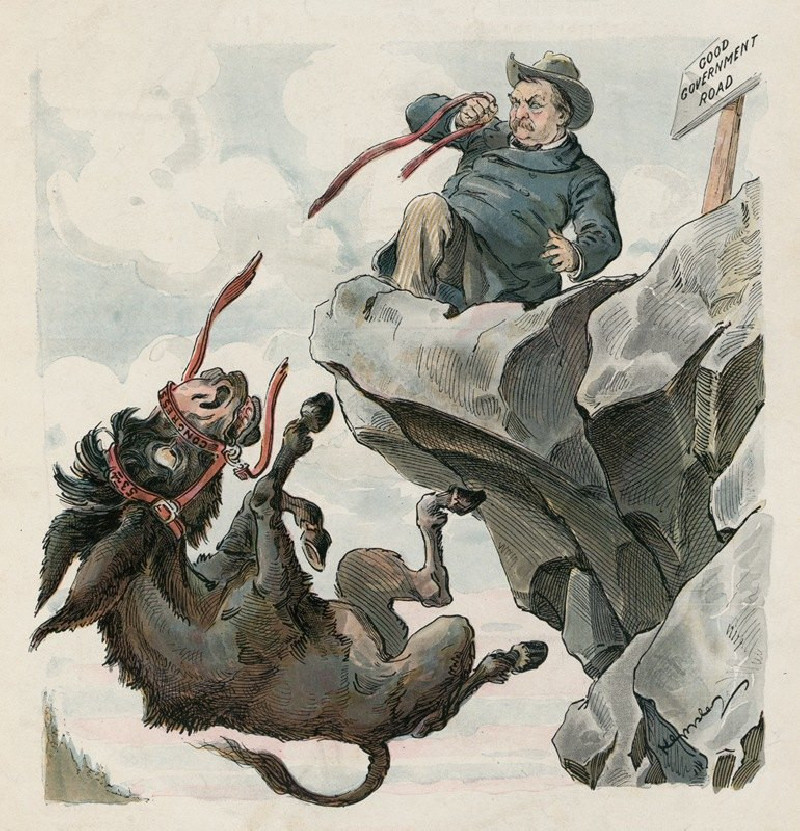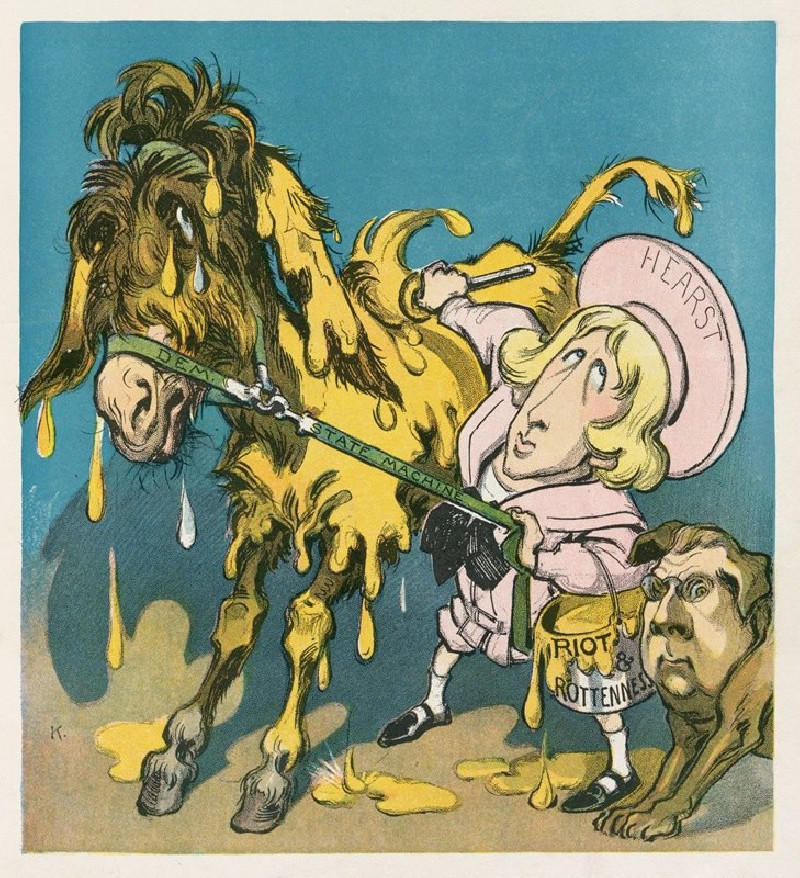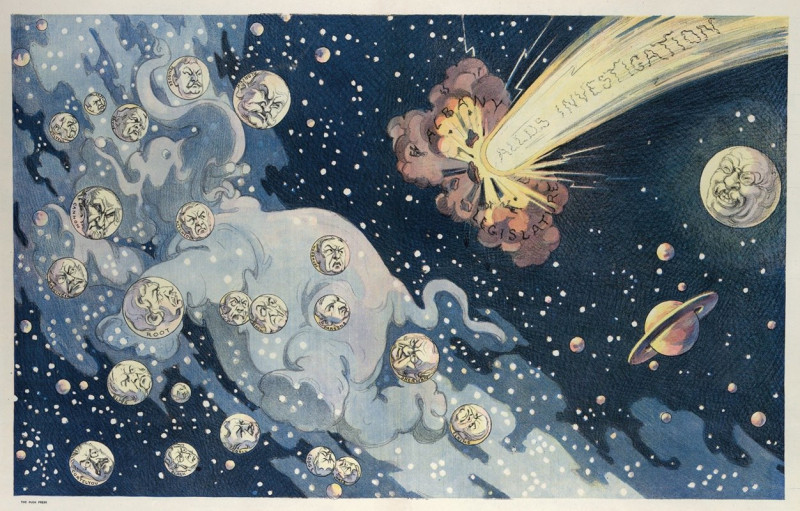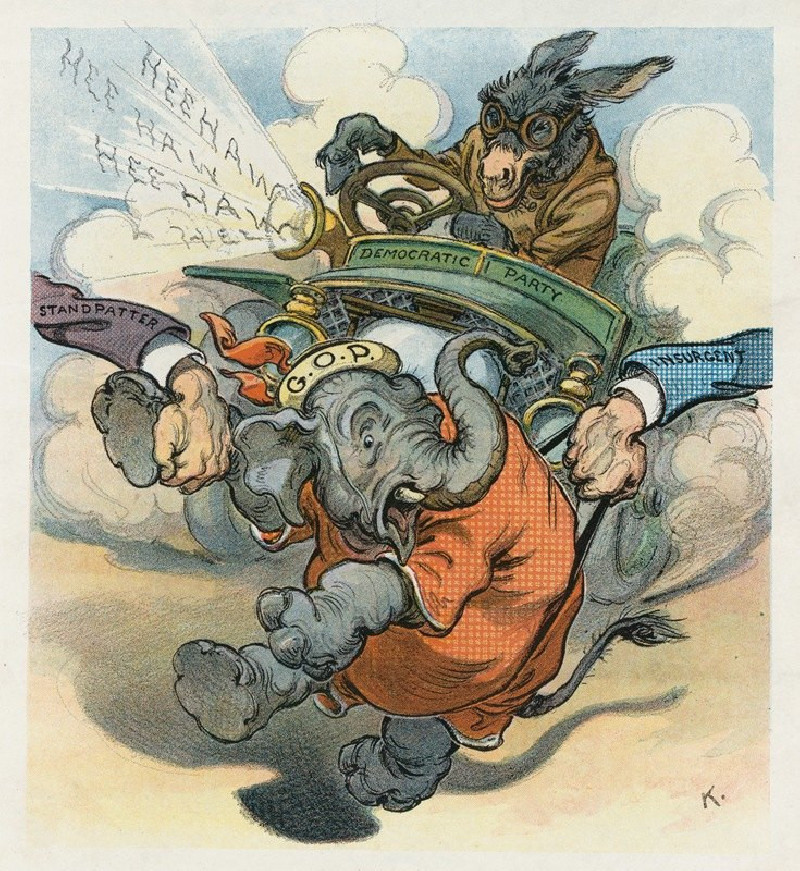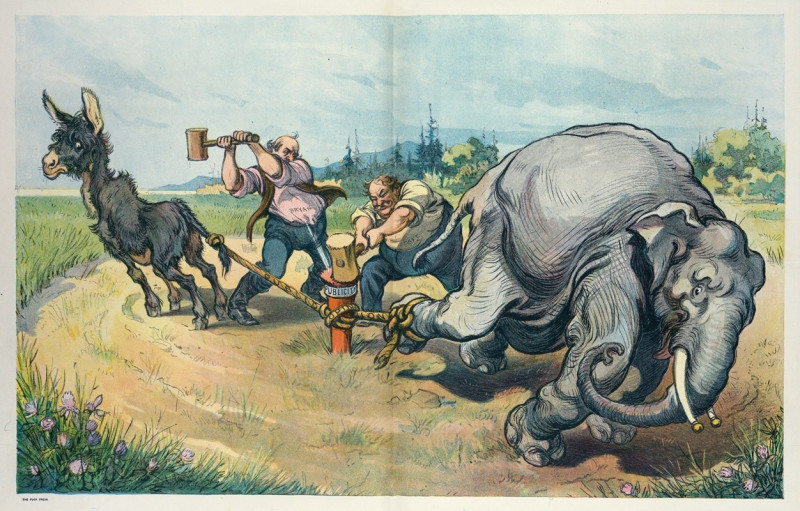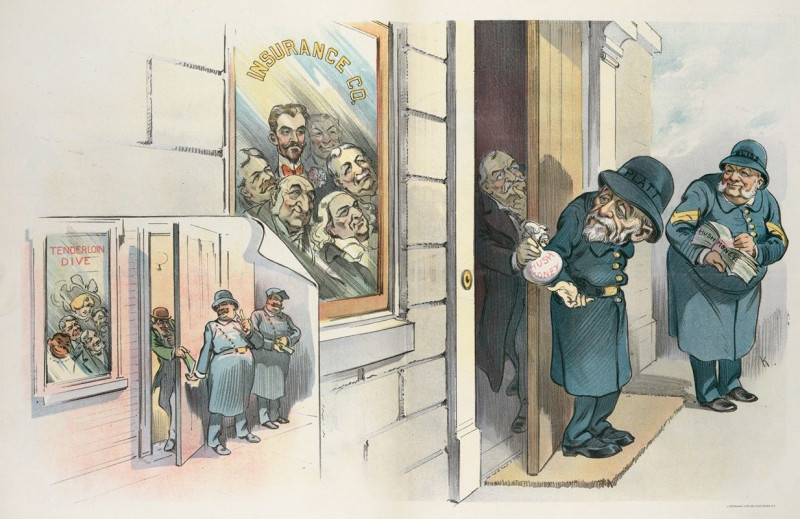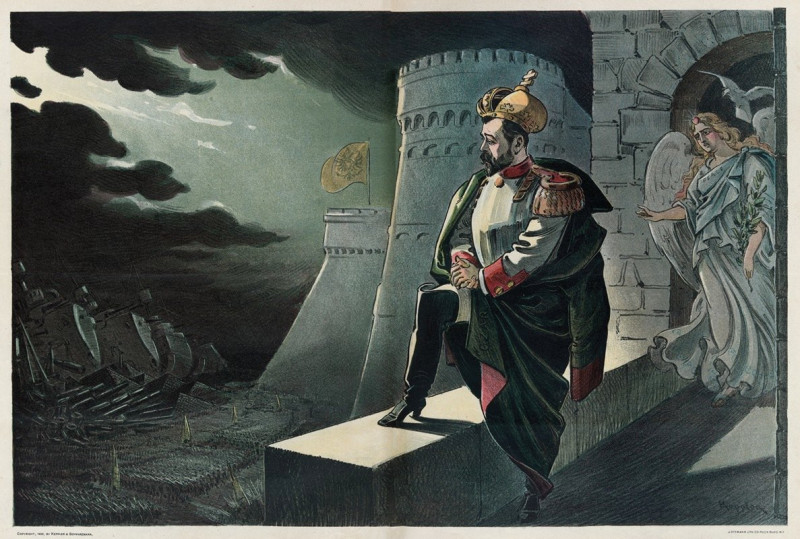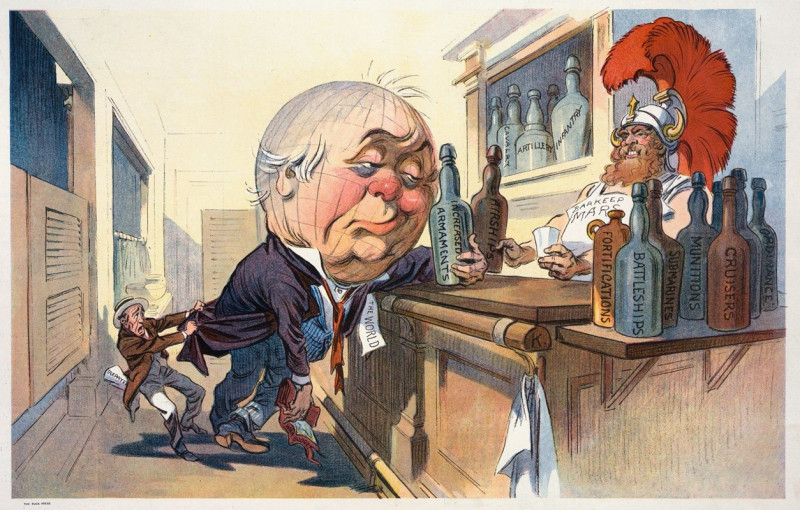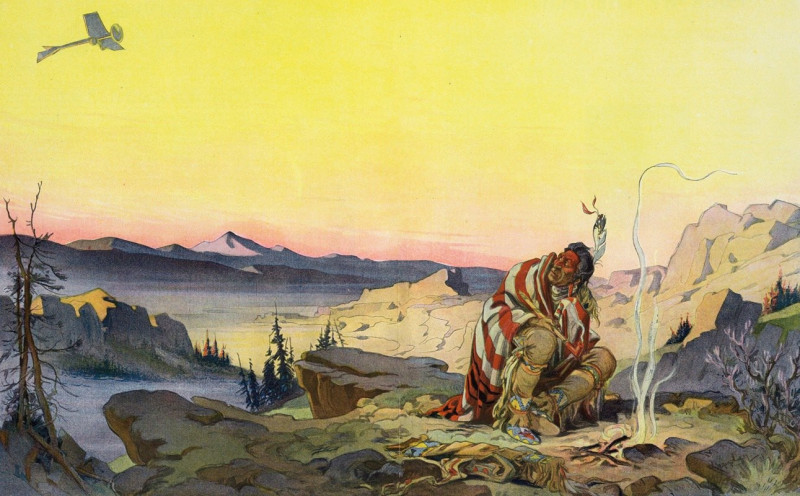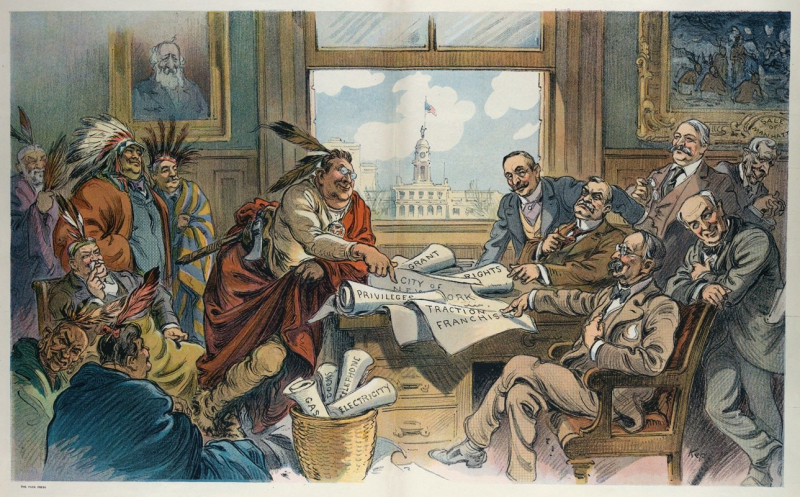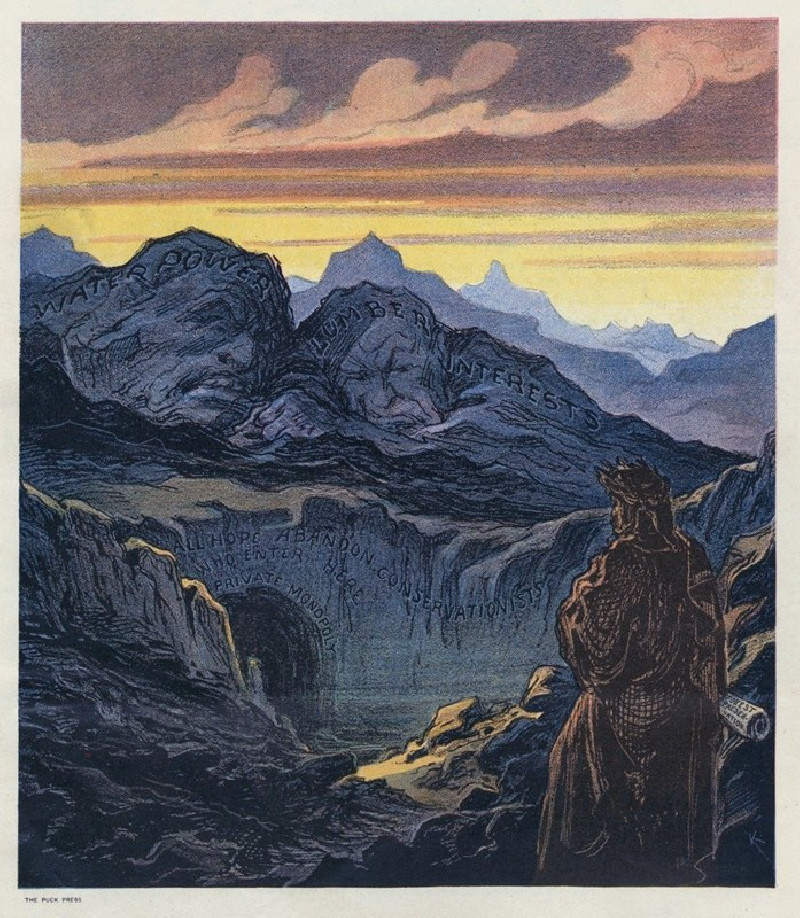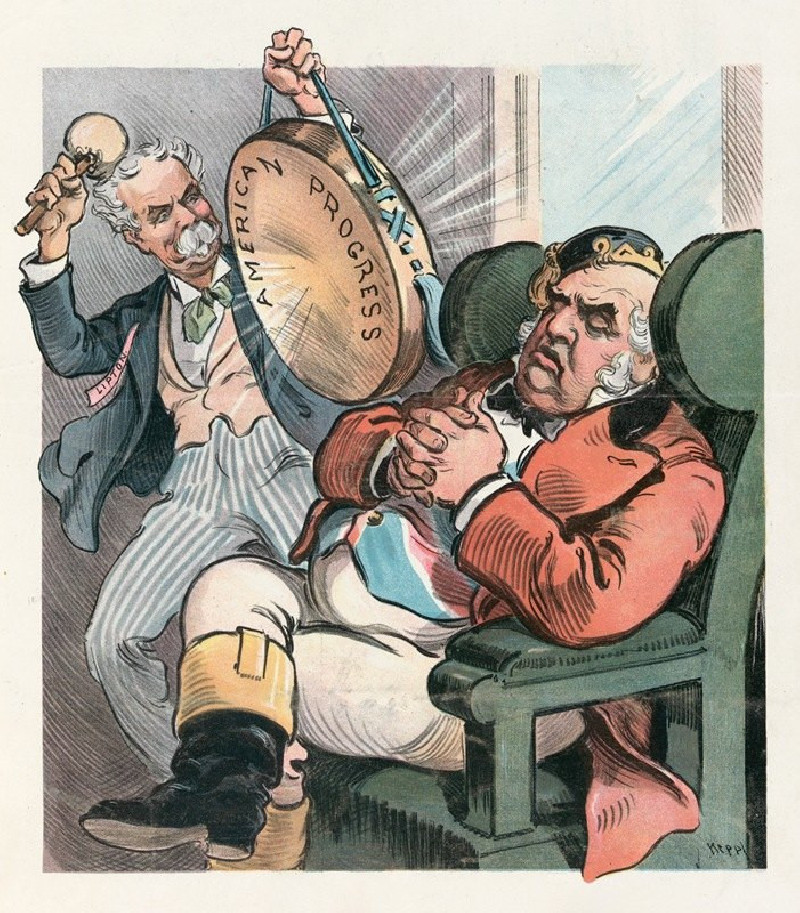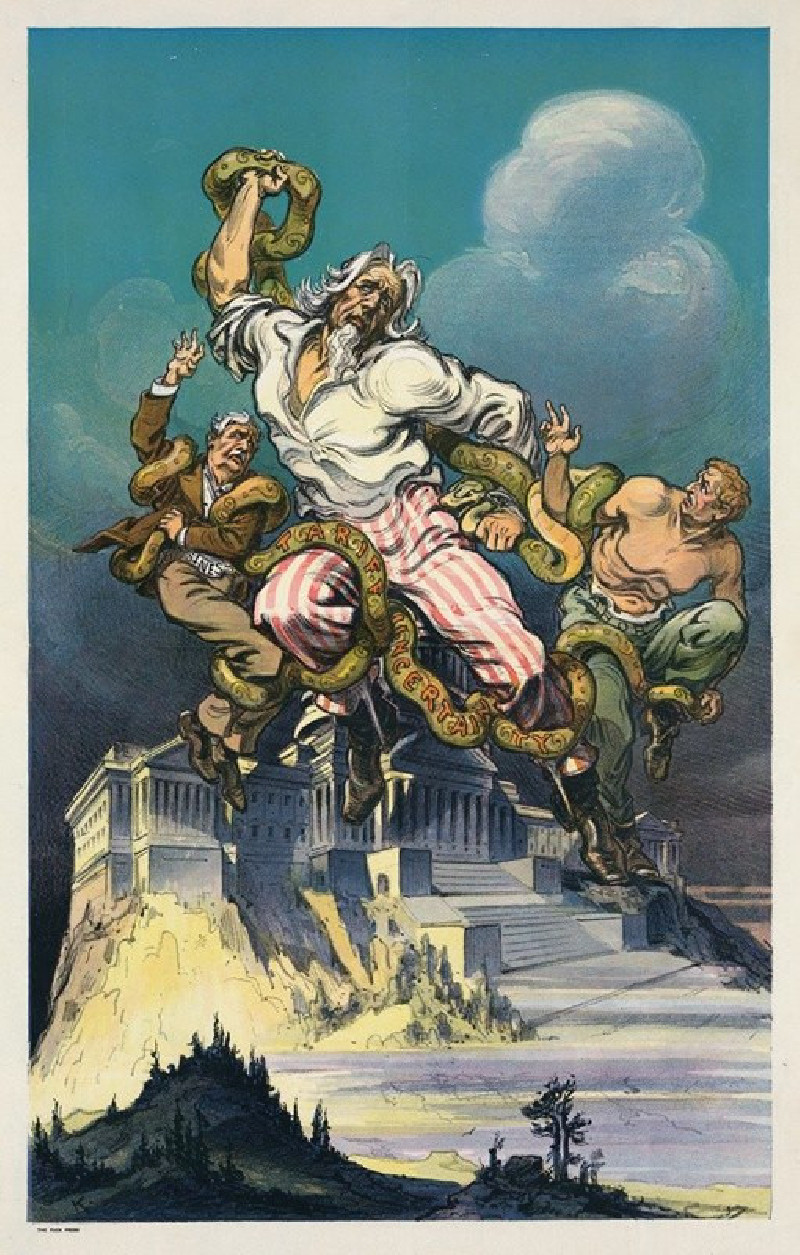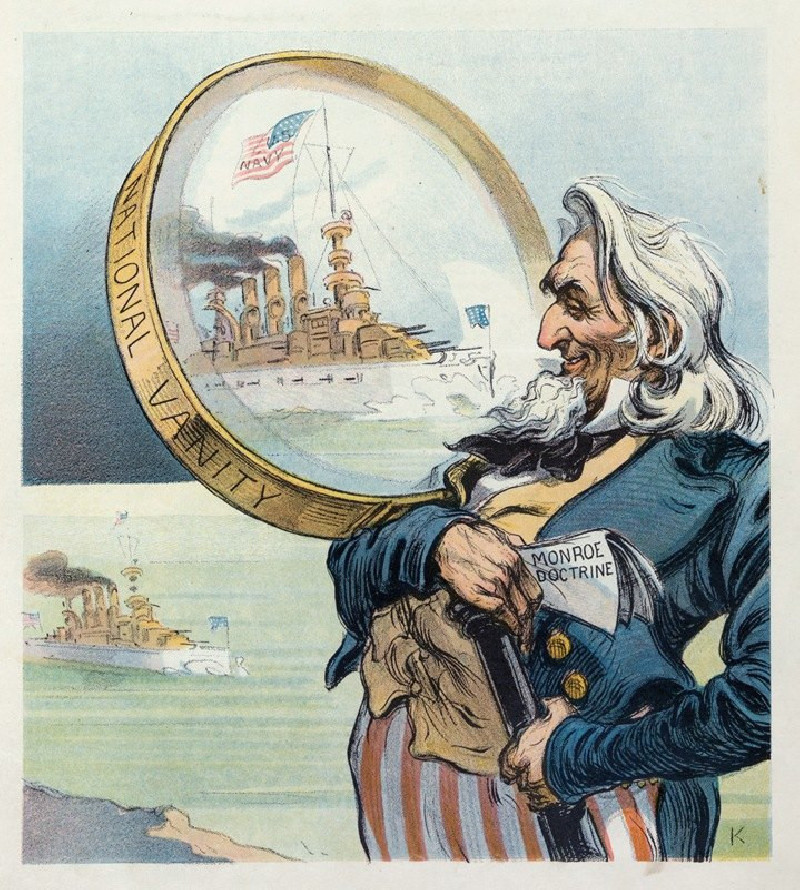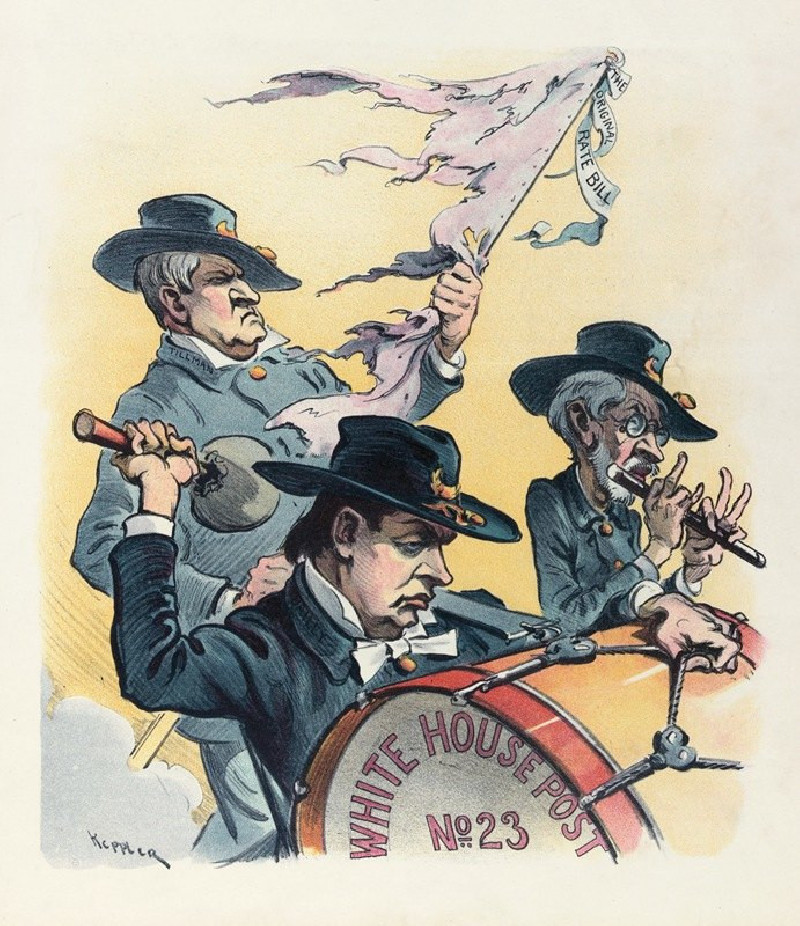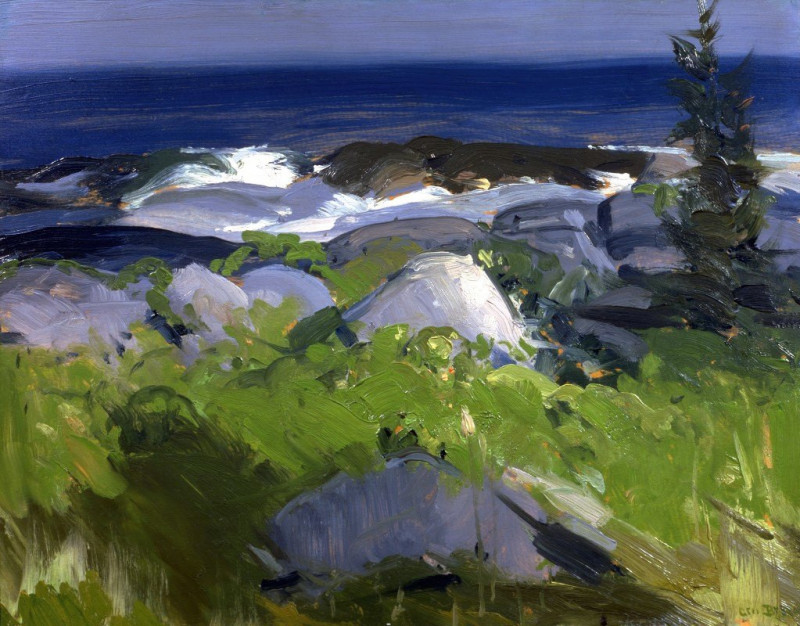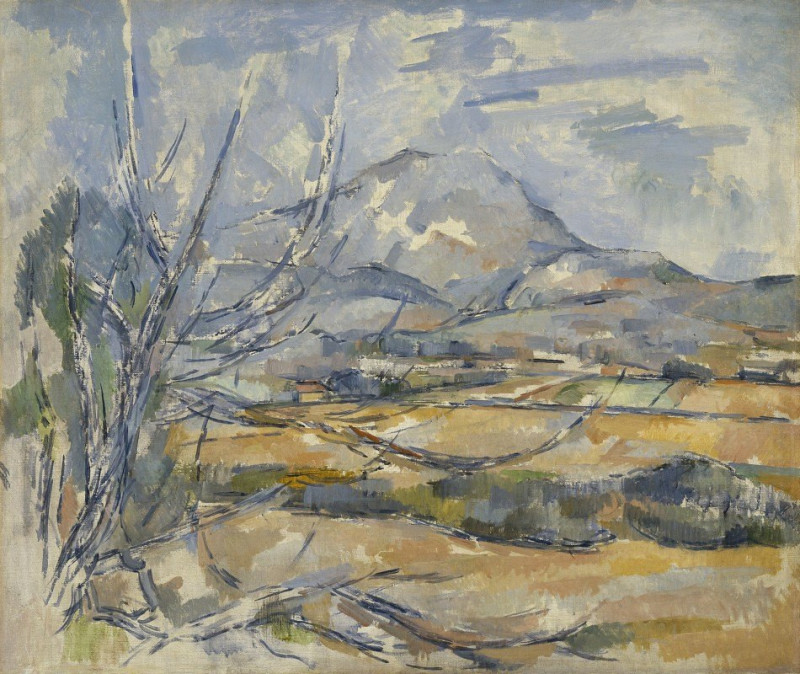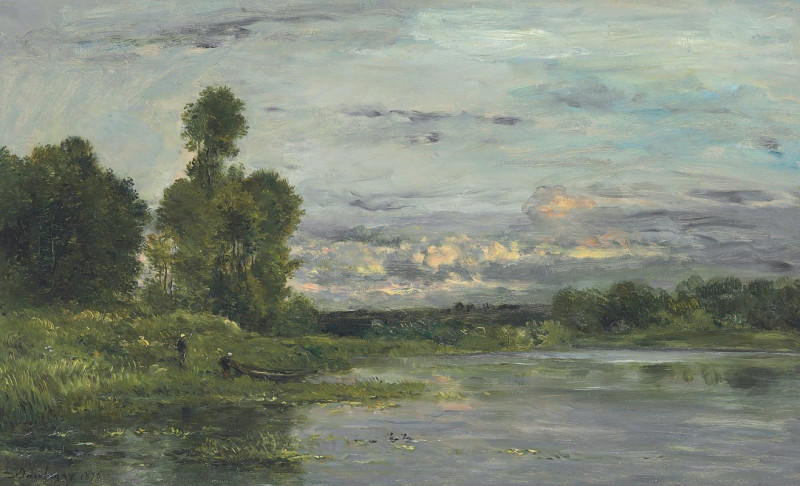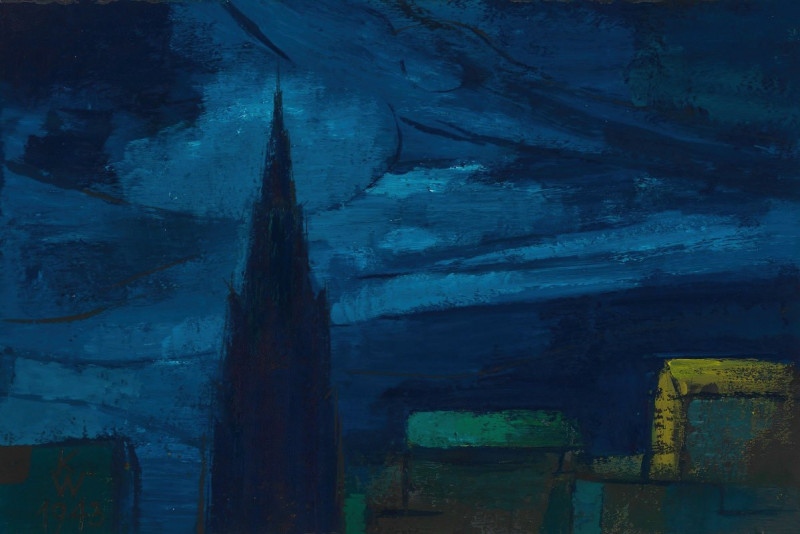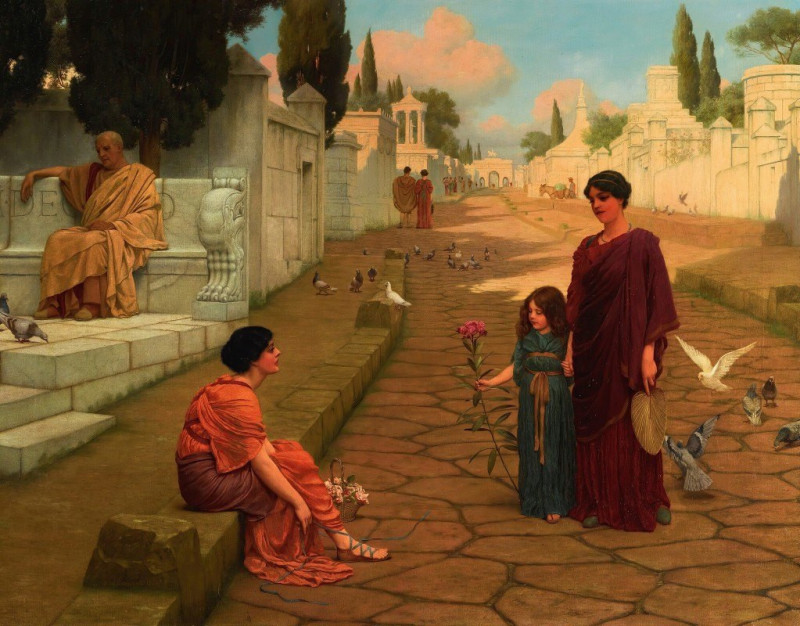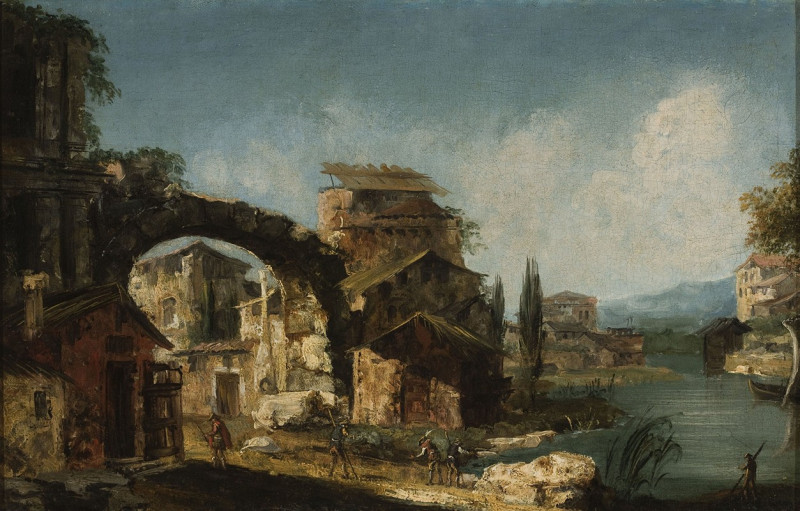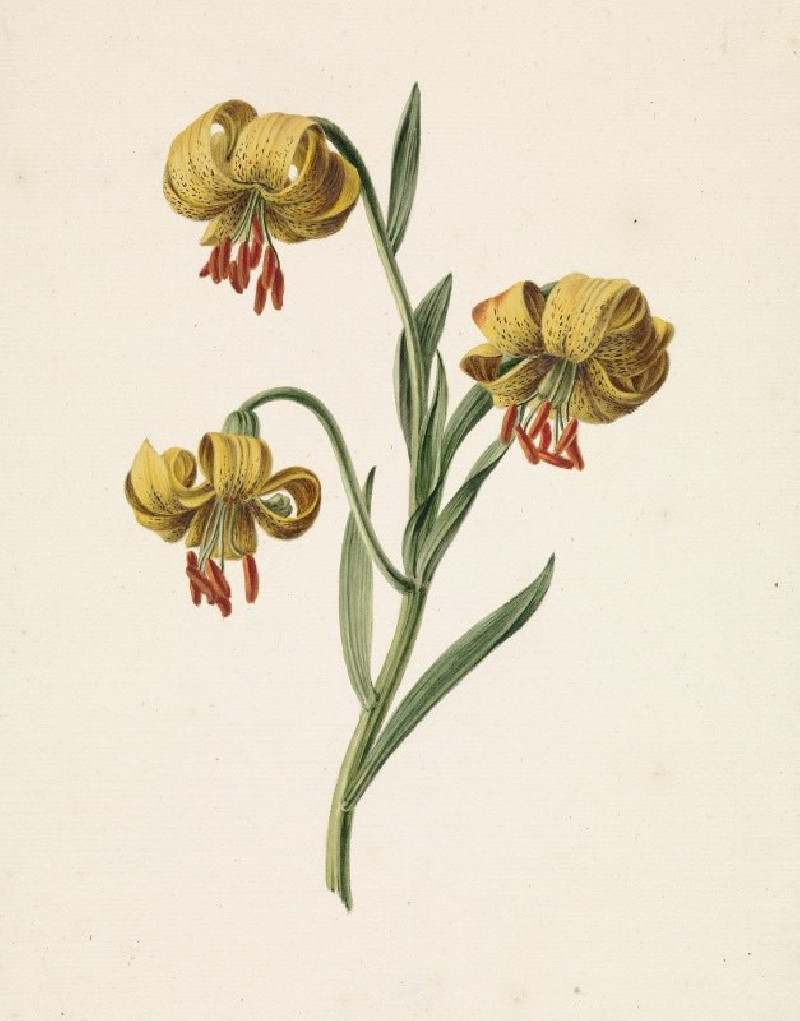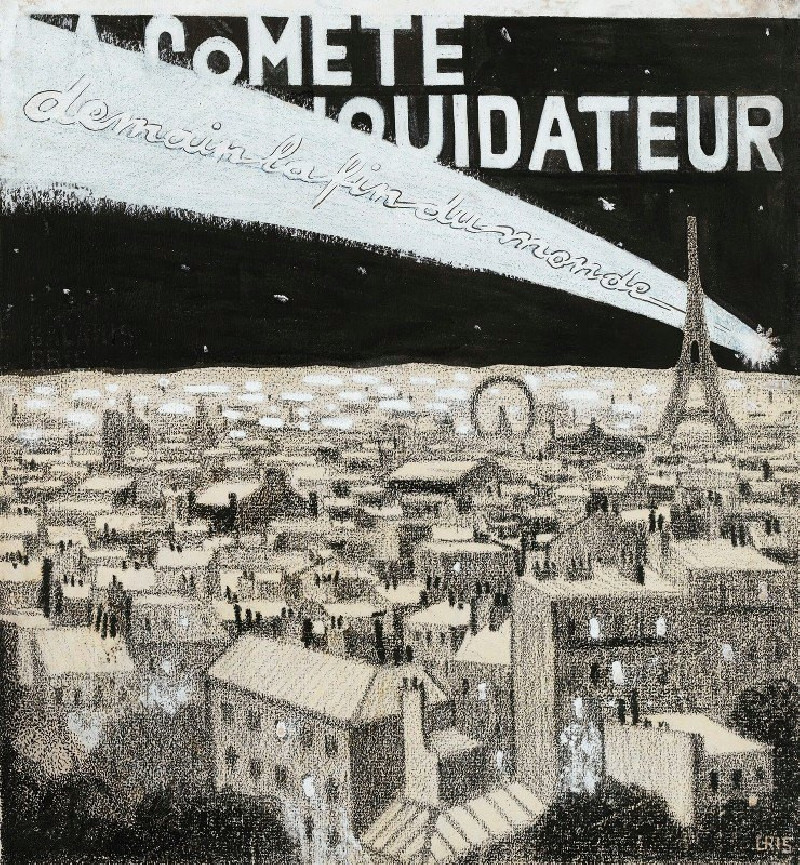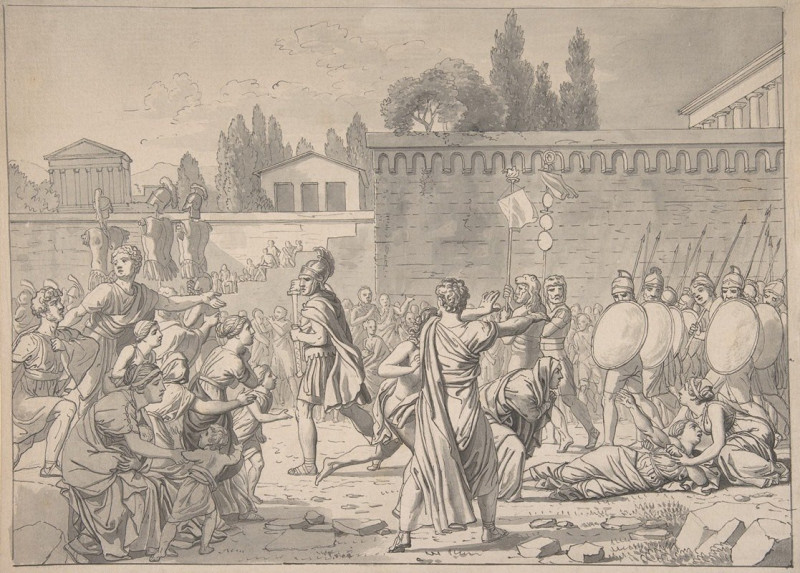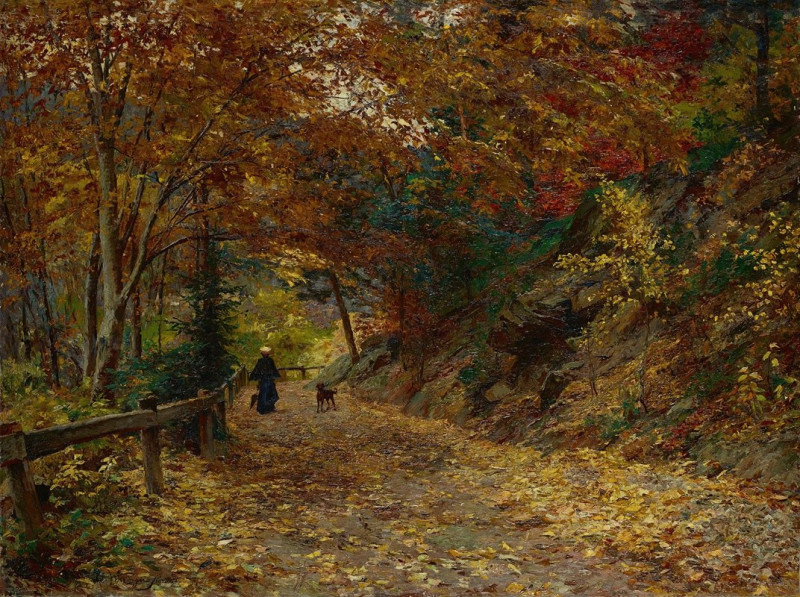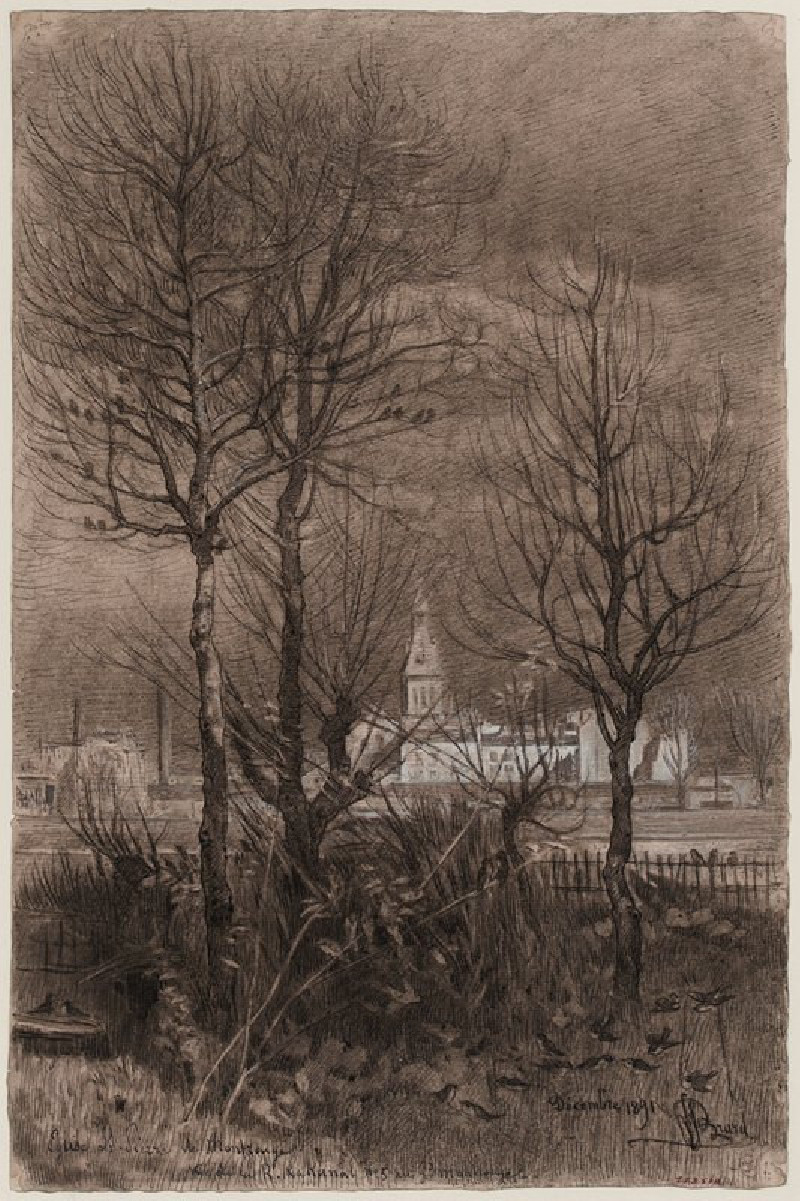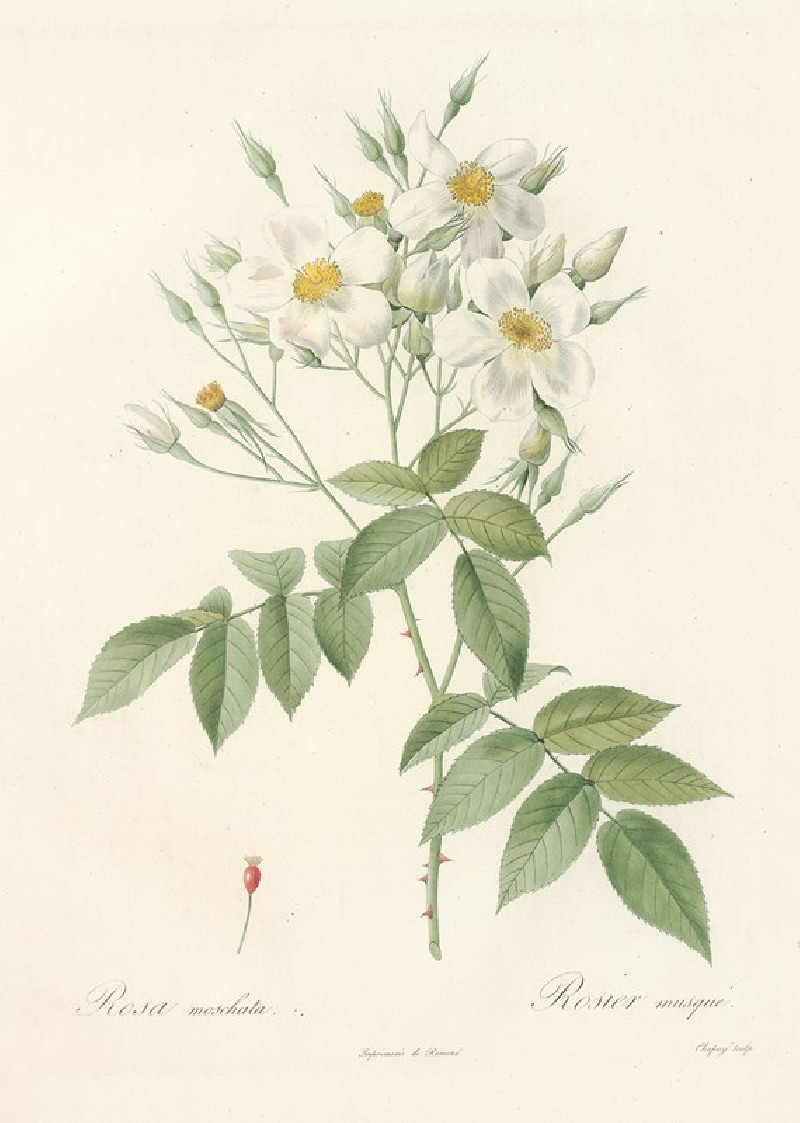Gulliver Cleveland and the Wall Street Brobdingnagians (1906)
Technique: Giclée quality print
Recommended by our customers
More about this artwork
"Gulliver Cleveland and the Wall Street Brobdingnagians" is a vivid and satirical artwork by Udo Keppler, created in 1906. This painting draws its inspiration and title from Jonathan Swift's "Gulliver’s Travels", notably playing with the theme of Brobdingnag, where Gulliver encounters giants. In Keppler’s adaptation, the painting serves as a metaphorical critique of financial power dynamics during its era.The central figure in this striking portrayal is a miniature-sized man, representing President Grover Cleveland, depicted struggling on top of what appears to be a desk cluttered with governmental instruments like a pen and law papers, all dwarfed by his surroundings. This tiny depiction of Cleveland is overshadowed by the looming, giant figures around him, who are dressed in opulent, Eastern-inspired garb suggesting perhaps a juxtaposition against Western political figures.These towering figures are labeled with the names of prominent real-life industrial and financial magnates of the time—identifiable as JP Morgan, John D. Rockefeller, and other notable figures of Wall Street. Their exaggerated sizes mock their real-world influence and power, visually amplifying their control over both the economic and political realms.Keppler’s work is not just a piece of art but a historical commentary, encapsulating the tensions between governmental power and the burgeoning forces of capitalism represented by these magnified financial titans. His use of rich colors and detailed expressions captures the viewer's attention, making a profound statement about the socio-economic landscape of early 20th-century America.
Delivery
Returns
Udo J. Keppler, since 1894. known as Joseph Keppler, Jr., was an American political cartoonist, publisher, and Native American advocate. The son of cartoonist Joseph Keppler (1838–1894), who founded Puck magazine, the younger Keppler also contributed to cartoons, and after his father's death became co-owner of the magazine under the name Joseph Keppler. He was also a collector of Native American artifacts.


